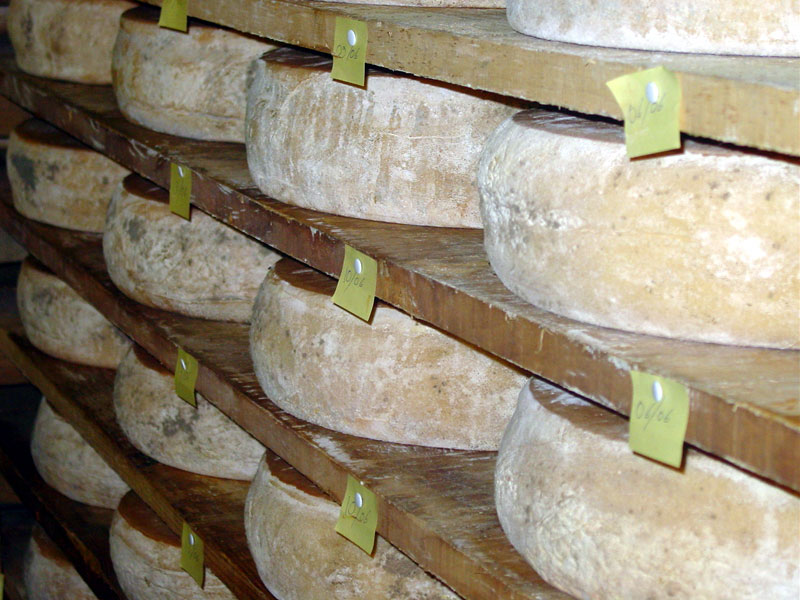Tasty reads
Nostrale

Little farms in the mountains of the province of Cuneo.
Cheese of cow’s milk, if necessary with ovine or oat’s milk, fat or half-fat, with raw and pressed dough.
Cylindric shape, with a diameter of 20 to 40 cm, 7 to 10 c. high. A mould weighs 3 to 8 kilos. Thin rind, oily, yellow-red in the fresh moulds, less thin and darker in the seasoned ones.
Soft dough, fat, pale yellow; in ther sseasoned moulds the dough is harder, whiter and slightly granular.
The Nostrano or Nostrale has always been made on the Alps in the province of Cuneo, and it is maybe that same cheese that in the Middle Ages was called caseus vacbarinus or vaccinus. As far as its production and characteristics go, it’s similar to the Bra; and with the Bra it was confused, before the Bra had its official denomination registered.
The cow’s milk (sometimes mixed with ovine and oat’s milk) is warmed to 30° C; then liquid rennet is added. Then the mixture is broken in pieces as big as hazelnuts (for the fresh moulds) or corn grains (for the seasoned ones), it is put in the “fascere” and pressed. It is salted dry or pickled. The minimum seasoning is 30 days for the fresh moulds; the maximum is 3-4 months.
Iit has a mountain herbs flavour, and the taste of te fresh moulds is sweet and haromatic; the seasoned ones have more intense and fragrant flavours, along with a sapid and slightly hot taste.
Alone or in dishes.
Langhe Favorita and Roero Arneis with the fresh moulds. Dolcetto d’Alba, di Dogliani and delle Langhe Monregalesi for the seasoned ones.
